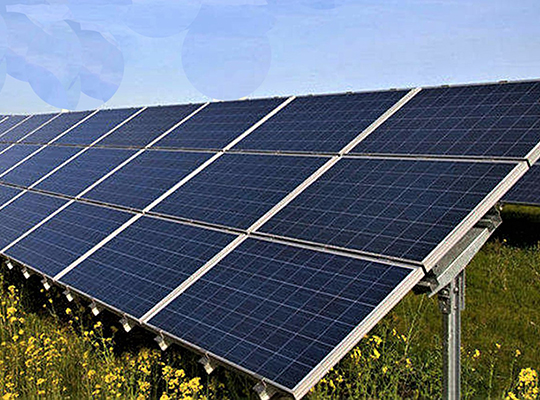Introduction
The Intergovernmental Panel on Climate Change (IPCC) has issued its newest report, which brings out the most current advances in climate change. The influence of human activities on the planet has further warmed the land, ocean and atmosphere. It further says that CO2 levels in the atmosphere are at their highest in two million years, sea-level rise is at its fastest in three thousand years, and arctic sea ice is at its lowest in at least 1000 years. The initiatives undertaken to reduce greenhouse gases (GHGs) emissions are quite ambitious and will help in limiting global warming to 1.5°C or even 2°C above the pre-industrial levels. Recently concluded (Conference of the Parties) COP 26 aims to reduce the GHG emission by 50% by 2030 and reach ‘net-zero’ by 2070. India also started to install the renewable energy capacity to 500 gigawatts (GW), which will account for half of the total energy consumption by 2030.
The demand for energy and how renewables can contribute
The core objective of renewable energy deployment in India is to promote economic growth, enhance energy security, increase energy access, and reduce climate change. Sustainable development is possible by the use of clean energy and by ensuring access to affordable and reliable energy for every citizen. India has emerged to become one of the world’s most attractive renewable energy markets, due to strong government backing and an improving economic position. To achieve sustainable growth and avert catastrophic climate change, the government will make a rapid shift to renewable energy technology. Customers are becoming aware of saving energy by the use of solar, wind, biomass, waste, and hydropower energies as it is evident that clean energy is affordable. India has set a target of installing 175 GW of renewable energy by 2020. The target is distributed into 100 GW from solar, 60 GW from wind, 10 GW from bio-power, and 5 GW from small hydropower. Investors have planned to create a total capacity of more than 270 GW viz., 191 GW by private corporations GW, 58 GW by foreign companies, 18 GW by private sectors contributed 18 GW, and Indian Railways contributed 5 GW. As per the recent predictions, solar and wind potential will be more than 750 GW and 410 GW by 2047.
Growth in the Electric Vehicle market and its contribution in the sustainable growth
For the first time in 2019, cumulative yearly sales of battery electric cars and plug-in hybrid electric vehicles surpassed two million mark globally. The electric vehicle sector has progressed significantly, with automakers investing billions in everything from R&D to plant redesign to offer new electrified vehicles. Traditional original equipment manufacturers (OEMs), new-entrant OEMs, captive financing institutions, and dealerships will all face substantial possibilities and problems as EVs expand in popularity in the years leading up to 2030. EVs have two distinct traits that make them ideal candidates for future vehicle technology. For starters, they may be charged with electricity from low- or non-CO2-emitting sources, allowing for further decarbonisation than vehicles that run on biofuels. Second, electric engines are far more efficient than internal combustion engines (ICEs) or other suggested technologies like compressed-air vehicles.
Another major area where many advancements are anticipated is energy storage. Batteries hold the key to weaning ourselves off of fossil fuels, and they will undoubtedly play a critical role in the future decades. Due to considerable R&D and enormous production increases in lithium-ion batteries over the last decade, costs have dropped by 80 to 85 percent, making not just energy storage but also electric cars financially viable.
Initiatives for transitioning to renewable energy
According to the Ministry of New and Renewable Energy, India’s total installed renewable energy capacity, excluding major hydropower, has surpassed 100 GW, accounting for around 26% of total capacity. Renewable energy sources, including major hydropower, currently account for 150 GW i.e., 40% of India’s total power generation capacity.
Beyond the climate imperative and the drive from the Indian government, there is another reason driving green energy’s growing appeal. While most policymakers recognised the significance of transitioning to non-fossil-based power generation a decade ago, the status of technology at the time meant that large-scale solar or wind energy projects were economically unviable without government subsidies.
Massive global investments in renewables technology, such as improving PV module efficiency in solar; lowering balance of plant costs; and improving wind turbine technology, particularly large rotor diameters and higher hub heights, have resulted in a significant reduction in the cost of green energy. While the cost of wind energy has decreased by 30-40%, the cost of Concentrating Solar Power (CSP) has decreased by 47 percent. The greatest significant reduction in recent years has been in the cost of solar photovoltaic (SPV) electricity, which has been reduced by 82 percent. According to the International Renewable Energy Agency (IRENA), new renewable power production projects are currently less expensive than maintaining many existing coal facilities.
Initiatives taken by the Government
In its bid to promote the use of non-conventional sources of energy, MNRE has set a target of achieving 500 GW of installed renewable energy capacity by 2030. The government is taking a number of efforts to boost the country’s renewable energy industry, including pushing private sector developers to use advanced technologies in renewable energy projects to get the most energy out of them. The majority of renewable energy projects in the country were being carried out by private sector developers selected through a transparent bidding procedure. The government has released standard bidding criteria to help distribution licensees get power at competitive prices in a cost-effective way. It also is assisting developers by authorising up to 100 percent Foreign Direct Investment (FDI) through the automatic method. Moreover, to meet the 175 GW target, Inter State Transmission System (ISTS) charges and losses for inter-state sale of solar and wind power are also waived for renewable projects commissioned by December 2022. Norms for the Renewable Purchase Obligation (RPO) have been set prescribed till 2022. Grid integration of utility-scale renewable energy capacity addition shall be aided by the development of Green Energy Corridors. The government has launched PM-KUSUM, solar rooftop phase II, 12,000 MW Central Public Sector Undertaking (CPSU) scheme Phase II, among other initiatives for the better future of renewable energy in India.
Summary
With a growing economy, the demand for energy from the commercial and industrial sectors is going to increase. Setting up new power plants is inevitably dependent on the import of highly volatile fossil fuels. Thus, it is essential to cater to the energy demand through judicious utilization of abundant renewable energy resources, such as biomass, solar, hydropower and wind energy. Apart from debating on the energy supply, renewable resources will help India in mitigating climate change. Renewable energy has the capability to create many employment opportunities at all levels, especially in rural areas. With an emphasis on presenting the real picture of massive renewable energy potential, it would be possible to attract foreign investments to herald a Green Energy Revolution in India.












